Welcome to the world of Easter escape rooms! This immersive and exciting activity is a perfect way to celebrate the holiday season with friends and family. In this guide, we’ll provide you with everything you need to know to create a successful Easter escape room, from design to marketing and customer service.
Whether you’re a seasoned escape room enthusiast or a first-time player, we’re confident that you’ll find this guide helpful. So grab your team and get ready for an unforgettable Easter adventure!
Easter Escape Room Overview
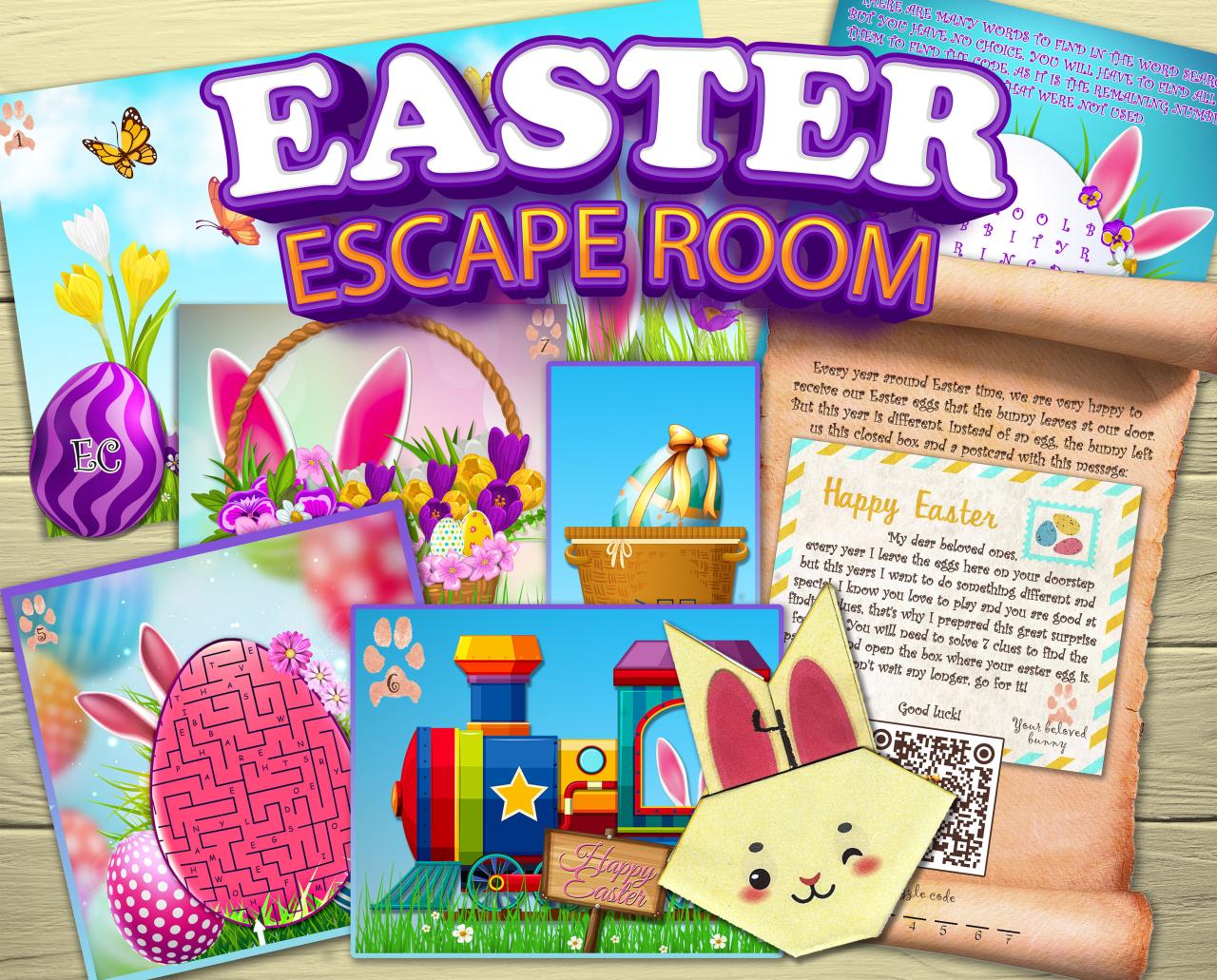
An Easter escape room is a themed adventure game that immerses participants in a festive Easter setting. Players are presented with a series of puzzles, riddles, and challenges that are all centered around the Easter holiday.
The puzzles and challenges in an Easter escape room can vary greatly in difficulty, but they all typically require players to use their wits and problem-solving skills to progress. Some common Easter-themed puzzles include:
Easter Egg Hunt
- Searching for hidden Easter eggs
- Solving riddles or puzzles to find clues
- Using a map or compass to navigate a maze
Decorating Easter Eggs
- Designing and decorating Easter eggs
- Following a recipe or instructions to create a specific design
- Using different materials and techniques to create unique eggs
Easter escape rooms have become increasingly popular in recent years, as they offer a fun and challenging way to celebrate the holiday. They are a great activity for families, friends, or coworkers, and they can be enjoyed by people of all ages.
Easter Escape Room Design
An Easter escape room should transport participants into a vibrant and festive world filled with Easter symbols and traditions.To create an immersive and engaging Easter-themed environment, consider incorporating elements such as:
Color Palette
Decorate the room with a cheerful color palette of pastels, such as lavender, pink, yellow, and green, reminiscent of spring flowers and Easter eggs.
Lighting
Utilize warm and inviting lighting to create a cozy and welcoming atmosphere. Consider using fairy lights, lanterns, or candles to enhance the festive ambiance.
Easter Symbols
Incorporate Easter symbols throughout the room, such as bunnies, eggs, chicks, and baskets. These familiar elements will evoke the spirit of Easter and provide a sense of familiarity and joy.
Easter Escape Room Puzzles
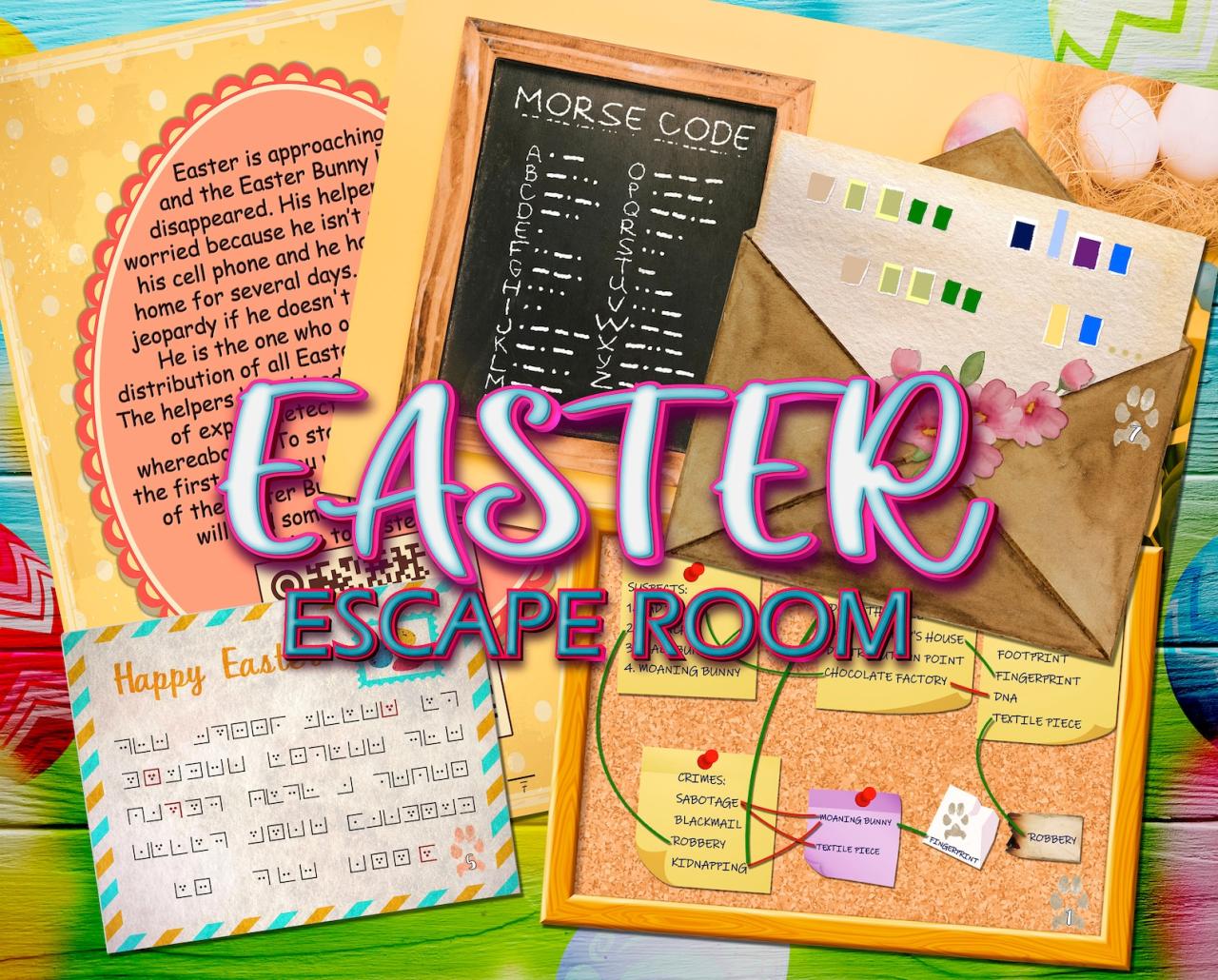
The puzzles in an Easter Escape Room should be Easter-themed and incorporate riddles, logic, and problem-solving. They should be challenging but accessible to a wide range of players. The difficulty level of the puzzles can be balanced by varying the complexity of the clues and the number of steps required to solve them.
Puzzle Design
When designing Easter Escape Room puzzles, it is important to consider the following:
- The theme of the room
- The target audience
- The difficulty level
- The flow of the game
The puzzles should be integrated into the story of the room and should help to create a sense of immersion for the players. They should also be fair and solvable, and should not rely on obscure knowledge or skills.
Puzzle Balance
The difficulty level of the puzzles should be balanced so that they are challenging but not impossible to solve. The first few puzzles should be relatively easy to solve, so that players can get a feel for the game. The difficulty level can then be gradually increased as the game progresses.
One way to balance the difficulty level of the puzzles is to vary the complexity of the clues. The clues can be simple and straightforward, or they can be more complex and require players to think outside the box. Another way to balance the difficulty level is to vary the number of steps required to solve the puzzles.
Some puzzles can be solved in a few steps, while others may require players to complete a series of tasks in order to find the solution.
Easter Escape Room Clues
Creating clever and well-hidden clues is essential for an engaging Easter escape room. Clues should lead players logically through the game, providing just enough information to keep them moving forward without giving away the solution.
Incorporate a variety of clue types to keep players engaged. Visual clues can include hidden objects, symbols, or patterns. Auditory clues could be recorded messages, sound effects, or even music. Tactile clues involve objects that players can touch or manipulate, such as puzzles or keys.
Pacing and Progression
The pacing and progression of clues are crucial. Start with easier clues that introduce the theme and mechanics of the game. Gradually increase the difficulty as players progress, requiring them to combine information from multiple clues and think creatively.
Avoid overwhelming players with too many clues at once. Give them time to process each clue and work together to solve it. Ensure that clues are interconnected and lead logically to the next step, creating a sense of progression and accomplishment.
Easter Escape Room Storyline
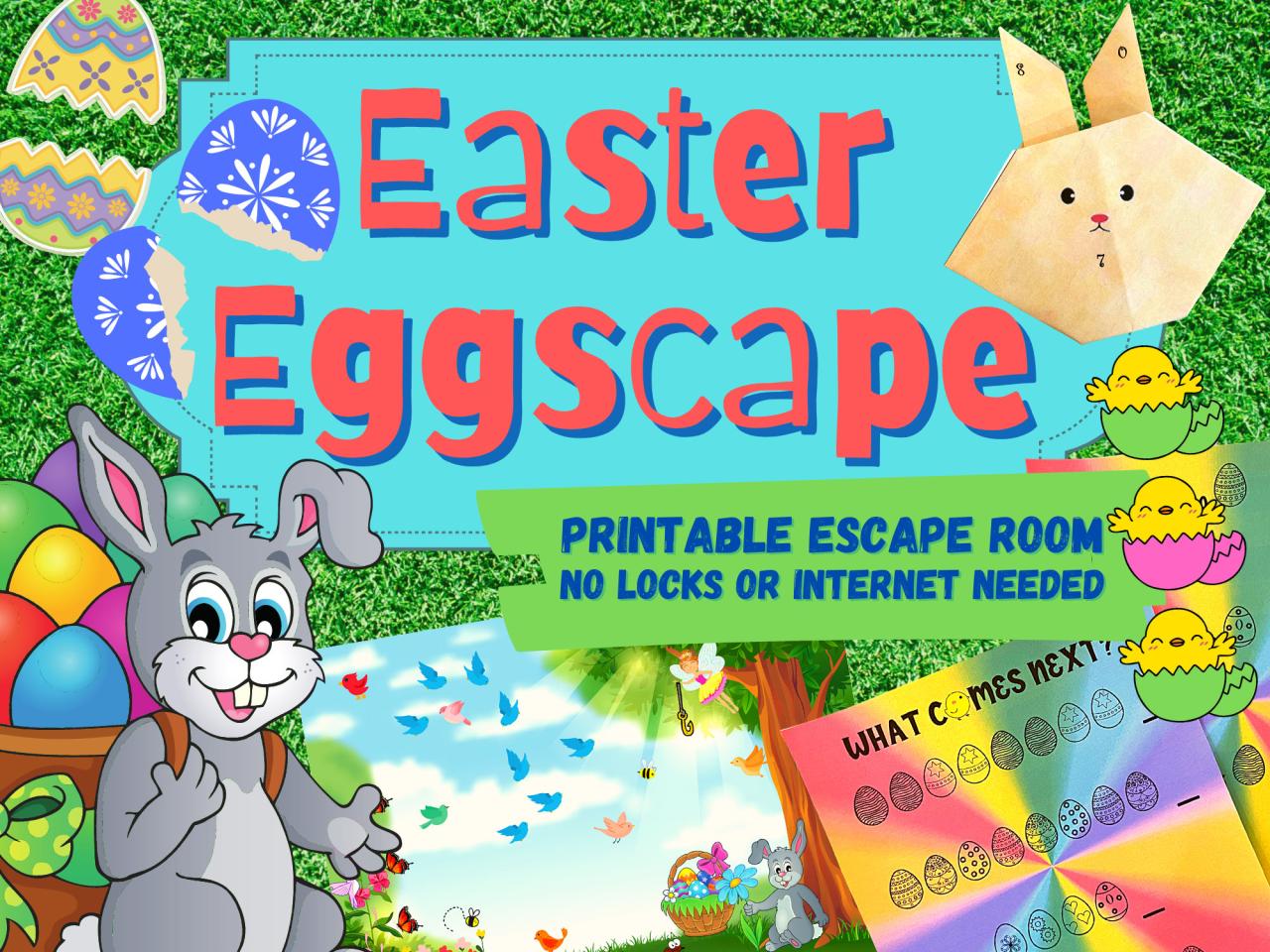
A cohesive storyline is crucial in an Easter escape room, as it provides the context and motivation for players’ actions. It should be engaging, memorable, and relevant to the Easter theme.
To develop an effective storyline, consider the following tips:
- Establish a clear objective:Define what players must achieve within the escape room, such as finding a hidden treasure or solving a mystery.
- Create relatable characters:Develop characters that players can connect with and empathize with, giving them a personal stake in the story.
- Incorporate Easter-themed elements:Weave in symbols, traditions, and characters associated with Easter, such as bunnies, eggs, and the Easter Bunny.
- Build suspense and tension:Gradually increase the stakes and challenges as players progress, creating a sense of urgency and excitement.
- Provide closure:Conclude the storyline with a satisfying resolution that ties up loose ends and leaves players with a sense of accomplishment.
Easter-Themed Storyline Examples, Easter escape room
- The Lost Egg of the Easter Bunny:Players embark on a quest to find a missing golden egg that belongs to the Easter Bunny, hidden by a mischievous fox.
- The Easter Egg Hunt Mystery:Players investigate a series of puzzling clues to solve a mystery surrounding the disappearance of several Easter eggs.
- The Enchanted Forest Adventure:Players venture into an enchanted forest on Easter morning, encountering whimsical creatures and solving riddles to reach a magical destination.
Easter Escape Room Marketing
Easter escape rooms are a fun and engaging way to celebrate the holiday. But how do you market your escape room to ensure it’s a success? Here are a few strategies to help you get started:
Social Media
Social media is a great way to reach your target audience and generate interest in your escape room. Create engaging content that will capture people’s attention, such as photos of your escape room, videos of people solving puzzles, and behind-the-scenes looks at your team.
Use relevant hashtags to help people find your content, and run contests and giveaways to generate excitement.
Email Marketing
Email marketing is a great way to stay in touch with your customers and promote your escape room. Send out regular emails with updates on your escape room, special offers, and upcoming events. You can also use email marketing to collect feedback from your customers and improve your escape room experience.
Flyers and Posters
Flyers and posters are a great way to reach people in your local community. Post them in high-traffic areas, such as coffee shops, libraries, and community centers. You can also hand them out at local events and festivals.
Online Advertising
Online advertising can be a great way to reach a wider audience. There are a variety of online advertising platforms available, such as Google AdWords and Facebook Ads. You can target your ads to specific demographics and interests, and you can track your results to see what’s working and what’s not.
Public Relations
Public relations can be a great way to get your escape room featured in the media. Reach out to local newspapers, magazines, and TV stations to see if they would be interested in writing a story about your escape room.
You can also host events and invite local media to attend.
Easter Escape Room Pricing
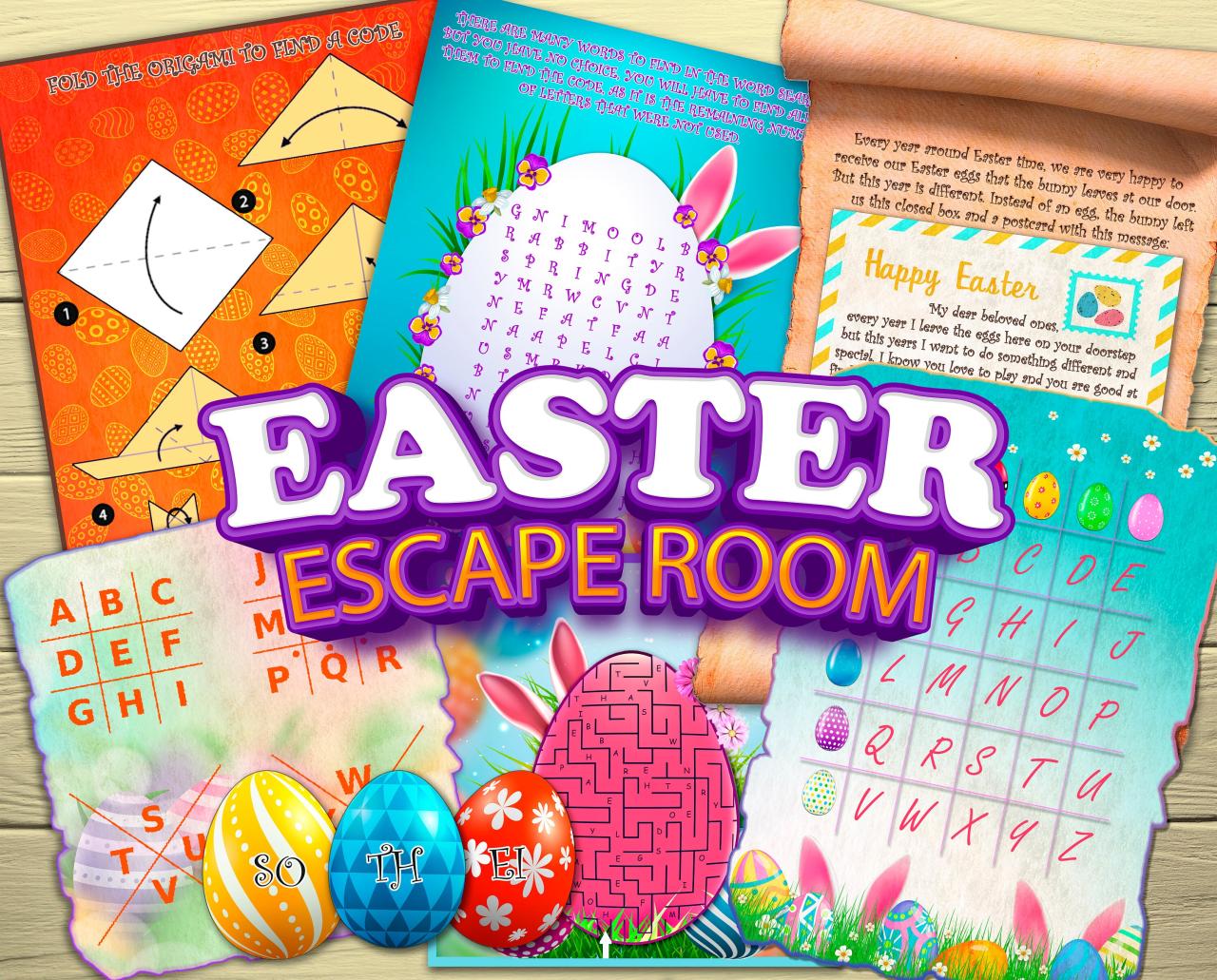
Determining the optimal price point for your Easter escape room is crucial for maximizing revenue while ensuring accessibility. Consider these factors:
- Operating Costs:Calculate all expenses associated with running the escape room, including rent, utilities, equipment, and staff.
- Market Competition:Research pricing strategies of similar escape rooms in your area to stay competitive.
- Target Audience:Determine the demographics and income levels of your target audience to set prices that align with their affordability.
- Seasonality:Consider adjusting prices during peak and off-season periods to optimize revenue.
Discounting and Promotions
Offering discounts and promotions can attract new customers and encourage repeat visits:
- Group Discounts:Offer discounts for groups of a certain size or more.
- Early Bird Specials:Provide discounts for bookings made in advance.
- Loyalty Programs:Implement a loyalty program to reward repeat customers with discounts or other perks.
- Special Event Pricing:Host special events, such as themed nights or holiday-themed rooms, and offer discounted pricing.
Easter Escape Room Safety
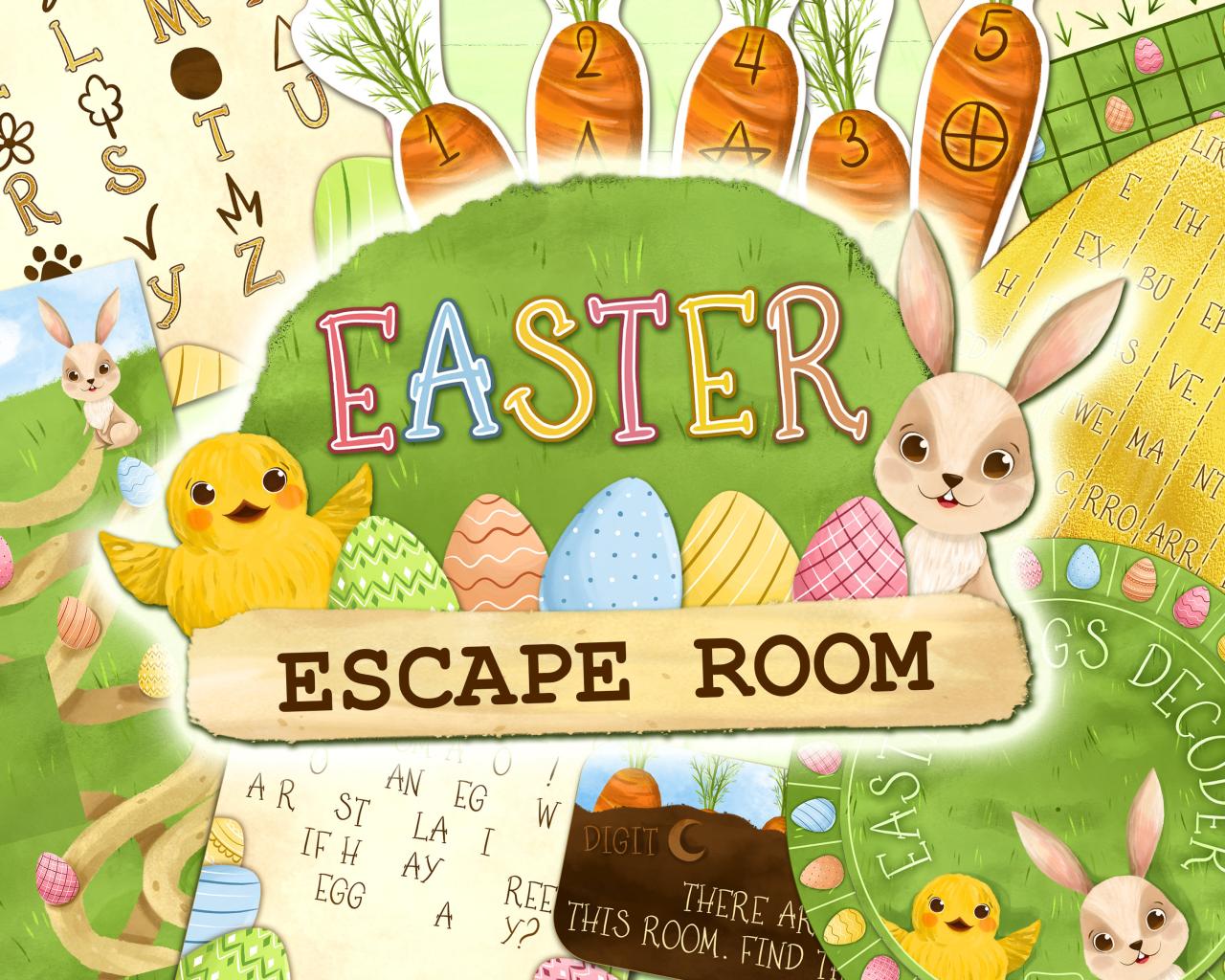
Ensuring the safety of players in an Easter escape room is paramount. Implementing comprehensive safety measures and adhering to best practices is crucial to create a fun and risk-free experience.
Regular safety inspections and maintenance of the room and equipment are essential. Emergency exits and lighting should be clearly marked and easily accessible. Fire extinguishers and first-aid kits should be readily available.
Emergency Procedures
- Establish clear emergency procedures and train staff on how to respond to different situations.
- In case of a fire, evacuate the room immediately and follow the designated evacuation route.
- If a player experiences a medical emergency, call for help promptly and provide first aid if necessary.
Player Safety
- Instruct players to avoid running or engaging in any strenuous activities that could lead to injury.
- Ensure that players are aware of potential hazards, such as slippery surfaces or low ceilings.
- Provide comfortable seating or resting areas for players who need a break.
Staff Training
- Train staff on safety protocols and emergency procedures.
- Empower staff to enforce safety rules and intervene if players engage in unsafe behavior.
- Regularly review and update safety measures to ensure their effectiveness.
Easter Escape Room Customer Service
Exceptional customer service is the cornerstone of any successful Easter escape room. It creates a positive and memorable experience for players, fostering loyalty and encouraging repeat visits.
To deliver excellent customer service, consider the following tips:
Creating a Positive Experience
- Greet players warmly and enthusiastically.
- Provide clear instructions and set expectations.
- Create a welcoming and inviting atmosphere.
- Encourage players to ask questions and provide assistance when needed.
- Celebrate successes and offer encouragement.
Handling Feedback and Complaints
- Listen attentively to feedback, both positive and negative.
- Respond promptly and professionally to complaints.
- Take steps to resolve issues and improve the experience for future players.
- Use feedback as an opportunity to enhance the escape room.
- Consider offering incentives or discounts to dissatisfied customers.
Easter Escape Room Trends
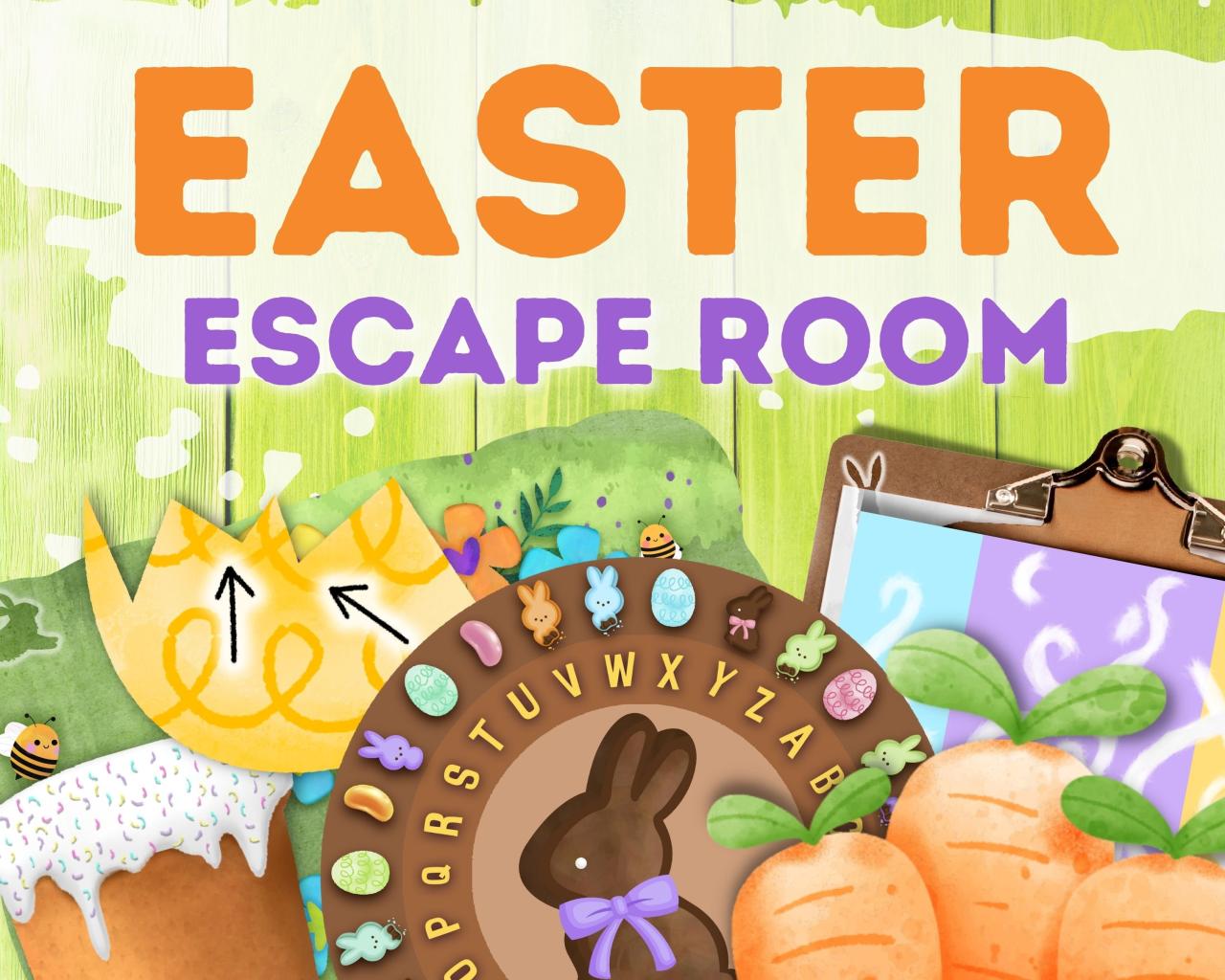
Easter escape rooms have become increasingly popular in recent years, and there are a number of emerging trends that are shaping the industry.
One of the most notable trends is the use of innovative technologies. For example, some escape rooms now use augmented reality (AR) or virtual reality (VR) to create immersive experiences. These technologies can be used to create realistic environments, puzzles, and challenges that would not be possible with traditional methods.
Innovative Technologies
- Augmented reality (AR): Overlays digital information onto the real world, allowing players to interact with virtual objects and environments.
- Virtual reality (VR): Creates a fully immersive virtual environment, transporting players to different worlds and experiences.
- Motion capture technology: Tracks players’ movements and translates them into actions within the game, providing a more interactive and physical experience.
Another trend is the focus on creating escape rooms that are more immersive and story-driven. These escape rooms often have elaborate sets and costumes, and they may even incorporate live actors. This type of escape room provides a more theatrical experience that can be truly memorable for players.
Immersive and Story-Driven Escape Rooms
- Elaborate sets and costumes: Transport players to different time periods, locations, and environments, enhancing the sense of immersion.
- Live actors: Interact with players, provide clues, and add an element of surprise and realism to the experience.
- Non-linear storylines: Allow players to explore multiple paths and make choices that influence the outcome of the game, creating a more engaging and interactive experience.
Finally, there is a growing trend towards creating escape rooms that are more accessible to a wider range of people. This includes escape rooms that are designed for families, children, and people with disabilities.
Accessible Escape Rooms
- Family-friendly themes and puzzles: Cater to a broader audience, allowing families to enjoy the escape room experience together.
- Adaptive technologies: Provide assistive devices and modifications for players with disabilities, ensuring inclusivity and equal access to the game.
- Simplified gameplay: Offer less complex puzzles and challenges, making the escape room accessible to players of all skill levels.
These are just a few of the trends that are shaping the future of Easter escape rooms. As the industry continues to grow, we can expect to see even more innovative and exciting escape rooms in the years to come.
Last Word
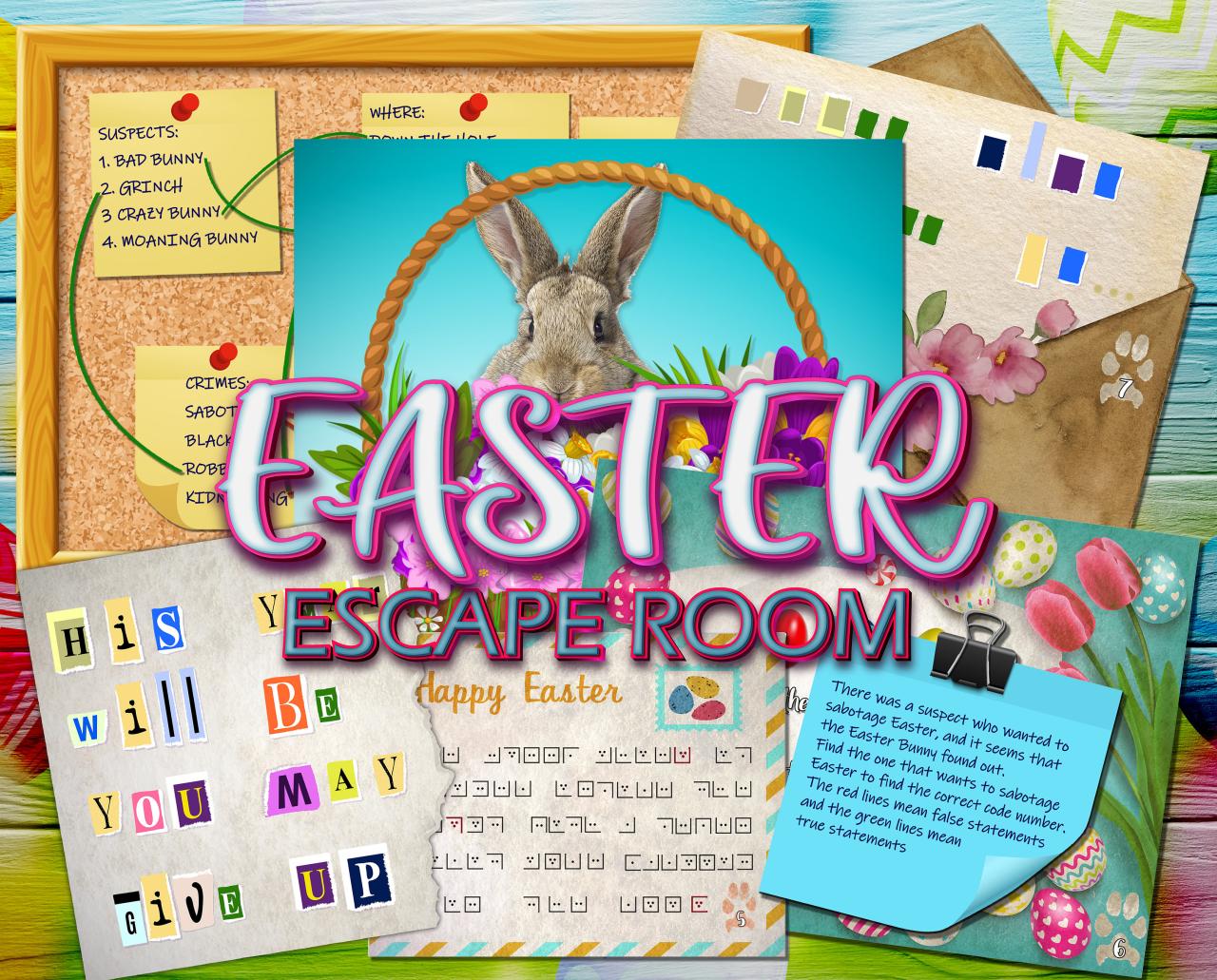
We hope this guide has given you all the information you need to create a successful Easter escape room. With a little planning and creativity, you can create an experience that your guests will love. So what are you waiting for? Get started today!
